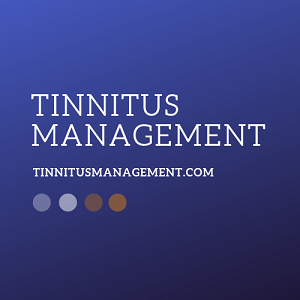The Tinnitus E-Programme was first made available in 2009. Originally, it provided the content I used in my NHS Tinnitus Management clinics and was made available in six modules to be used over a period of 6-10 weeks. It was entirely Self-Directed. In 2018, it became therapist supported and later in the year, was moved to a purpose-built learning platform “CourseCraft”. Although a Self-Directed version is available (only to provide choice) it is not recommended; final Outcomes for the therapist supported TEP are far superior; in fact, everyone so far engaged in the therapist supported TEP has completed the intervention and has excellent Outcomes.
Since 2018, the full title of the course is "COGNITIVE BEHAVIOURAL THERAPY FOR TINNITUS E-PROGRAMME"
To view a full summary of all Modules content visit the Tinnitus E-Programme website
Categories of Tinnitus Distress are defined through using the Tinnitus Handicap Inventory (THI) scores:
- 0 – 16 = No tinnitus distress (Category 1)
- 18–36 = Mild tinnitus distress (Category 2)
- 38-56 = Moderate tinnitus distress (Category 3)
- 58-76 = Severe tinnitus distress (Category 4)*
- 78-100 = Severe+ tinnitus distress (Category 5)*
*One-to-one is recommended for Categories 4 and 5
You can use an online THI to find out your score
Why Choose Online Working?
- Work at your own pace at times that suit you rather than having to attend pre-booked attendances
- Cost: by far the most common reason. Because there is less therapist time one to one, cost is greatly reduced
- Effectiveness: the research has evidenced that Outcomes through working online are as good as those through one to one Go to evidence
Go to the Tinnitus E-Programme now (click View Course)
CBT for Tinnitus E-Programme
The modules lead you through the CBT (Cognitive Behavioural Therapy) based process from the start. It is essential to understand the physiology and neurobiology that cause the symptoms we experience as distress, alongside understanding the mechanism of tinnitus. They are intrinsically joined together.
It is because of how we feel about tinnitus that it causes distress. If we feel nothing for and about the noise we experience as tinnitus, we'd not react to it. In fact, we'd not bother to tune in and listen to it. It would be much the same as being used to traffic going about its business outside the house. You know it's there but so what? Most of us habituate to traffic noise and other sensory information in our environments. Think about the last time you were in a supermarket. Was there music playing? What noises did you NOTICE while you were in there? The likelihood is you don't remember, and another likelihood is that while you were there, you didn't think about it. Module 3 in the TEP discusses our 3 levels of hearing, "Significance of Sound", and the impact of "meaning" i.e. what a sound might mean to us.
These are all factors that are monitored subconsciously and when there is no significance and no meaning - positive or negative - the conscious part of us doesn't have to consider it. It is when there IS significance and meaning that our attention is drawn and we become conscious of what is happening. Being brain-based, this means that the pre-frontal cortex (PFC) has to make a decision - "how do I feel about this?" "I don't like it" so monitoring of the situation takes over - a joint effort by both the subconscious (limbic system) and conscious (PFC).
What makes us feel one way or another - 'not care about', 'care about and like', 'care about and dislike'? We feel what we do because of the meaning we attach to each given situation. Those meanings become BELIEFS. They come from subconscious 'filters' based on previous experience. Many of these filters have been there since childhood, but we are always adding, strengthening and changing filters. We only tend to weaken filters through being conscious of them. We can only challenge them by being conscious of them, allowing the PFC to challenge them to bring about a filter-change in the subconscious.
The 'filters' are called Cognitive Distortions: distorted understanding that gives rise to a distorted meaning/significance. There are more than a dozen of the most common Cognitive Distortions, but as individuals, we have a tendency to use the same 3 or 4 of them over and over. Probably the most common are "Predicting the Future", "All or Nothing Thinking", "Maximising the Negative" and "Mind Reading".
In my tinnitus clinics for example, guess how often I have heard people say things like: "I'll never feel normal again"; "Tinnitus has ruined my life"; "No one knows how bad this is"? Those statements are true for the person saying them - they BELIEVE them to be true. And BELIEFS are powerful.
But what happens once those very same people realise what BELIEFS are? That they come through "filters" from the subconscious....? In most cases, they recognise their Cognitive Distortions immediately. And this is covered during Modules 3 - 5 of Part One TEP, including using part one of a CBT Thought Record that helps identify these BELIEFS through using a stuctured process.
At the end of the course
Around weeks 8 - 10, the measures used at the start (including the THI) are repeated. This is where progress is measured and most scores have reduced by at least 1 THI category, but more commonly by 2 categories. The exception to this tends to be those who began with Category 4 and 5 scores (THI score 58+). Although THI scores will have reduced significantly in most if not all cases, they are likely to have reduced from Category 5 to Category 3 or 4 for example. So it is for this group of Users that working one-to-one is recommended
